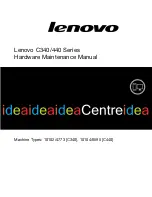
z/OS
or
MVS/ESA
CONFIG
(CF)
operator
command.
See
z/OS
MVS
System
Commands
for
further
detail.
While
processing
this
command,
MVS
must
interact
with
PR/SM,
via
a
service
call
instruction,
to
request
that
the
storage
be
varied.
Because
storage
cannot
be
varied
without
PR/SM
involvement,
no
way
exists
to
circumvent
the
validity
checking
PR/SM
does
to
confine
a
partition
occupant
within
the
storage
limits
defined
for
the
logical
partition.
I/O
Security
Considerations
IOCDS
Considerations
contains
a
very
thorough
discussion
of
I/O
configuration-related
topics.
It
should
be
read
in
its
entirety
before
reading
the
following
security
considerations.
When
the
IOCDS
does
not
specify
any
sharing,
I/O
devices
are
owned
solely
by
the
logical
partitions
that
own
the
channel
paths
that
are
attached
to
them.
Even
if
a
channel
path
has
been
designated
as
reconfigurable,
that
channel
path
cannot
be
removed
from
a
logical
partition
unless
the
channel
path
has
first
been
taken
offline
from
within
that
logical
partition.
For
z/OS
System
Control
Program
(SCP)
partitions,
this
is
done
with
the
SCP
operator
command
CONFIG
(CF).
For
partitions
containing
other
SCPs,
the
Channel
Operations
task
list
must
be
used.
Use
the
Configure
On/Off
task
to
configure
channel
paths
that
are
online.
Use
the
Release
task
to
release
the
channel
paths
that
are
isolated.
Or,
use
the
Reassign
Channel
Path
task
to
reconfigure
a
CHPID
in
one
step.
I/O
sharing,
Dynamic
I/O
Configuration
and
Dynamic
CHPID
Management
are
available
in
the
trusted
product,
they
should
never
be
used
in
secure
installation.
If
the
IOCDS
were
to
specify
I/O
sharing,
it
would
be
indicated
in
the
Input/Output
Configuration
Program’s
Configuration
Reports
(see
the
Input/Output
Configuration
Program
User’s
Guide
.)
In
a
secure
installation,
a
channel
path
must
never
be
defined
as
shared
in
the
IOCDS.
Specification
of
a
shared
channel
path
can
compromise
the
security
of
the
installation.
A
shared
channel
path
is
defined
by
specifying
one
of
the
following
on
the
CHPID
statement:
v
SHARED
keyword
v
NOTPART
keyword
v
PARTITION
keyword
with
more
than
one
logical
partition
in
the
access
list
v
IOCLUSTER
keyword
v
PATH
keyword
with
more
than
one
CSS
ID
(i.e.
a
spanned
channel
path)
Shared
channel
paths
were
not
part
of
the
evaluated
product.
Use
of
a
shared
channel
path
allows
the
possibility
of
two
partitions
having
access
to
the
same
I/O
control
units
and
devices.
This
is
in
contradiction
to
the
policy
of
strict
separation.
Additionally,
the
use
of
shared
channels
may
facilitate
some
form
of
covert
signaling.
However,
if
covert
signaling
is
not
perceived
to
be
a
significant
threat,
it
is
highly
recommended
that
each
use
of
a
shared
channel
be
carefully
analyzed
for
its
possible
effect
on
the
installations
security
policy.
Although
a
shared
channel
path
is
defined
to
be
shared,
none
of
the
devices
that
are
connected
to
it
need
to
be
shared
among
logical
partitions.
When
devices
are
assigned
to
a
single
logical
partition,
they
cannot
be
accessed
by
any
other
logical
partition.
Appendix
B.
Developing,
Building,
and
Delivering
a
Certified
System
B-5
Содержание Z9
Страница 1: ...System z9 Processor Resource Systems Manager Planning Guide SB10 7041 03...
Страница 2: ......
Страница 3: ...System z9 Processor Resource Systems Manager Planning Guide SB10 7041 03...
Страница 12: ...x PR SM Planning Guide...
Страница 18: ...xvi PR SM Planning Guide...
Страница 26: ...xxiv PR SM Planning Guide...
Страница 43: ...ZVSE ZVM Figure 1 1 Characteristics of Logical Partitions Chapter 1 Introduction to Logical Partitions 1 17...
Страница 54: ...1 28 PR SM Planning Guide...
Страница 126: ...2 72 PR SM Planning Guide...
Страница 195: ...Figure 3 23 Security Page Image Profile Chapter 3 Determining the Characteristics of Logical Partitions 3 69...
Страница 220: ...4 8 PR SM Planning Guide...
Страница 232: ...5 12 PR SM Planning Guide...
Страница 250: ...B 16 PR SM Planning Guide...
Страница 266: ...D 10 PR SM Planning Guide...
Страница 272: ...X 6 PR SM Planning Guide...
Страница 273: ......
Страница 274: ...Printed in USA SB10 7041 03...
















































